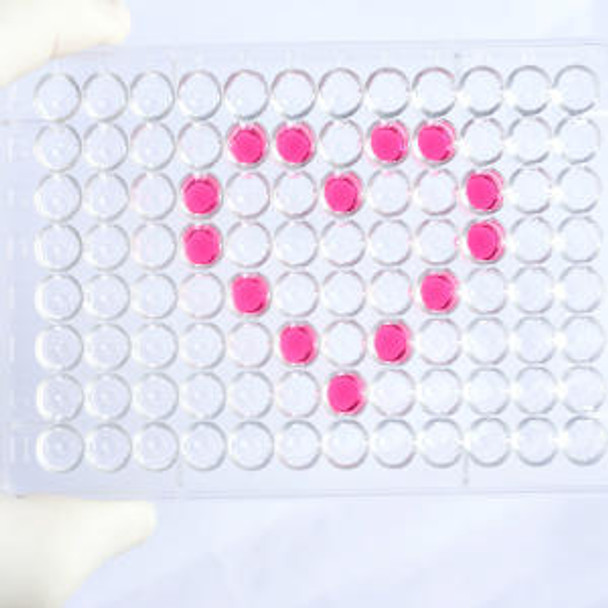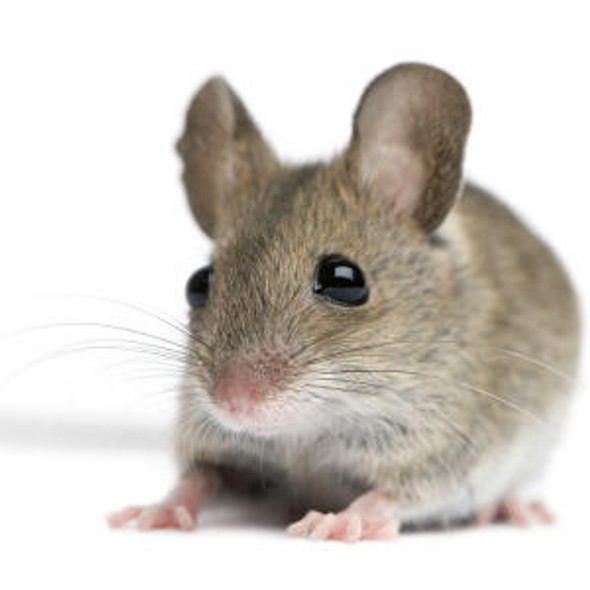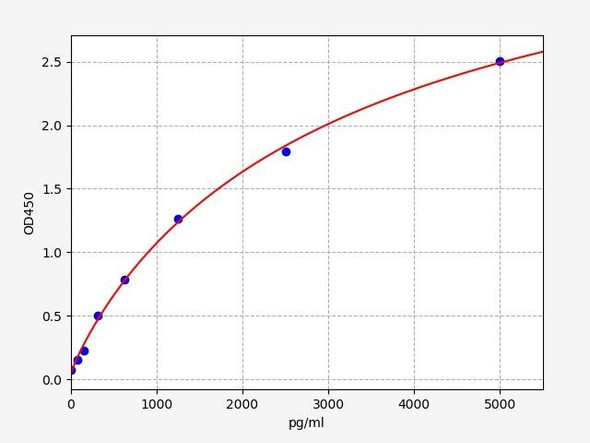Human Poliovirus receptor-related protein 1 (PVRL1) ELISA Kit (HUEB1893)
- SKU:
- HUEB1893
- Product Type:
- ELISA Kit
- Size:
- 96 Assays
- Uniprot:
- Q15223
- Range:
- 0.312-20 ng/mL
- ELISA Type:
- Sandwich
- Synonyms:
- PVRL1, Poliovirus receptor-related protein 1, Nectin-1, Herpes virus entry mediator C, Herpesvirus entry mediator C, HveC, Herpesvirus Ig-like receptor, HIgR, HVEC, PRR1, CD111, PVRR1, SK-12
- Reactivity:
- Human
Description
Human Poliovirus receptor-related protein 1 (PVRL1) ELISA Kit
The Human Poliovirus Receptor-Related Protein 1 (PVRL1) ELISA Kit from Assay Genie is a highly sensitive and specific assay designed for the accurate quantification of PVRL1 levels in human samples. PVRL1 is an important protein involved in cell adhesion and viral entry, making it a key target for research in virology, immunology, and cell biology.This ELISA kit offers reliable and reproducible results, making it ideal for a wide range of applications including biomarker discovery, drug development, and disease research.
By accurately measuring PVRL1 levels in serum, plasma, and cell culture supernatants, researchers can gain valuable insights into the role of this protein in various diseases and conditions.Overall, the Human PVRL1 ELISA Kit is an essential tool for studying the functions and mechanisms of PVRL1 in both normal physiological processes and disease states, providing valuable data for advancing our understanding of viral infections, immune responses, and cellular interactions.
| Product Name: | Human Poliovirus receptor-related protein 1 (PVRL1) ELISA Kit |
| SKU: | HUEB1893 |
| Size: | 96T |
| Target: | Human Poliovirus receptor-related protein 1 (PVRL1) |
| Synonyms: | Herpes virus entry mediator C, Herpesvirus Ig-like receptor, Nectin-1, Herpesvirus entry mediator C, HveC, HIgR, CD111, HVEC, PRR1 |
| Assay Type: | Sandwich |
| Detection Method: | ELISA |
| Reactivity: | Human |
| Detection Range: | 0.312-20ng/mL |
| Sensitivity: | 0.078ng/mL |
| Intra CV: | 3.5% | ||||||||||||||||||||
| Inter CV: | 6.6% | ||||||||||||||||||||
| Linearity: |
| ||||||||||||||||||||
| Recovery: |
| ||||||||||||||||||||
| Function: | Promotes cell-cell contacts by forming homophilic or heterophilic trans-dimers. Heterophilic interactions have been detected between PVRL1/nectin-1 and PVRL3/nectin-3 and between PVRL1/nectin-1 and PVRL4/nectin-4. |
| Uniprot: | Q15223 |
| Sample Type: | Serum, plasma, tissue homogenates, cell culture supernates and other biological fluids |
| Specificity: | Natural and recombinant human Poliovirus receptor-related protein 1 |
| Sub Unit: | Can form trans-heterodimers with PVRL3/nectin-3 and with PVRL4/nectin-4. Interacts (via C-terminus) with afadin (via PDZ domain); this interaction recruits PVRL1 to cadherin-based adherens junctions. Interacts with integrin alphaV/beta3. Interacts with herpes simplex virus 1 (HHV-1), herpes simplex virus 2 (HHV-2), and pseudorabies virus (PRV) envelope glycoprotein D; functions as an entry receptor for these viruses. |
| Research Area: | Neurosciences |
| Subcellular Location: | Isoform Gamma Secreted |
| Storage: | Please see kit components below for exact storage details |
| Note: | For research use only |
| UniProt Protein Function: | nectin 1: Promotes cell-cell contacts by forming homophilic or heterophilic trans-dimers. Heterophilic interactions have been detected between PVRL1/nectin-1 and PVRL3/nectin-3 and between PVRL1/nectin-1 and PVRL4/nectin-4. Defects in PVRL1 are the cause of ectodermal dysplasia Margarita Island type (EDMI); also known as Zlotogora-Ogur syndrome, cleft lip/palate-ectodermal dysplasia syndrome (CLPED1) or ectodermal dysplasia 4. Ectodermal dysplasia defines a heterogeneous group of disorders due to abnormal development of two or more ectodermal structures. EDMI is an autosomal recessive syndrome characterized by the association of cleft lip/palate, ectodermal dysplasia (sparse short and dry scalp hair, sparse eyebrows and eyelashes), and partial syndactyly of the fingers and/or toes. Two thirds of the patients do not manifest oral cleft but present with abnormal teeth and nails. Defects in PVRL1 are the cause of non-syndromic orofacial cleft type 7 (OFC7). Non-syndromic orofacial cleft is a common birth defect consisting of cleft lips with or without cleft palate. Cleft lips are associated with cleft palate in two- third of cases. A cleft lip can occur on one or both sides and range in severity from a simple notch in the upper lip to a complete opening in the lip extending into the floor of the nostril and involving the upper gum. Belongs to the nectin family. 3 isoforms of the human protein are produced by alternative splicing. |
| UniProt Protein Details: | Protein type:Membrane protein, integral; Cell adhesion Chromosomal Location of Human Ortholog: 11q23.3 Cellular Component: presynaptic membrane; cell-cell adherens junction; adherens junction; intracellular membrane-bound organelle; membrane; axon; extracellular region; plasma membrane; integral to membrane; catenin complex Molecular Function:viral receptor activity; protein binding; protein homodimerization activity; protein heterodimerization activity; virion binding; coreceptor activity; cell adhesion molecule binding; carbohydrate binding Biological Process: intercellular junction assembly and maintenance; axon guidance; entry of virus into host cell; signal transduction; iron ion transport; heterophilic cell adhesion; cell-cell adhesion; regulation of synaptogenesis; retina development in camera-type eye; immune response; lens morphogenesis in camera-type eye; homophilic cell adhesion; cell adhesion Disease: Cleft Lip/palate-ectodermal Dysplasia Syndrome |
| NCBI Summary: | This gene encodes an adhesion protein that plays a role in the organization of adherens junctions and tight junctions in epithelial and endothelial cells. The protein is a calcium(2+)-independent cell-cell adhesion molecule that belongs to the immunoglobulin superfamily and has 3 extracellular immunoglobulin-like loops, a single transmembrane domain (in some isoforms), and a cytoplasmic region. This protein acts as a receptor for glycoprotein D (gD) of herpes simplex viruses 1 and 2 (HSV-1, HSV-2), and pseudorabies virus (PRV) and mediates viral entry into epithelial and neuronal cells. Mutations in this gene cause cleft lip and palate/ectodermal dysplasia 1 syndrome (CLPED1) as well as non-syndromic cleft lip with or without cleft palate (CL/P). Alternative splicing results in multiple transcript variants encoding proteins with distinct C-termini. [provided by RefSeq, Oct 2009] |
| UniProt Code: | Q15223 |
| NCBI GenInfo Identifier: | 18202503 |
| NCBI Gene ID: | 5818 |
| NCBI Accession: | Q15223.3 |
| UniProt Secondary Accession: | Q15223,O75465, Q2M3D3, Q9HBE6, Q9HBW2, |
| UniProt Related Accession: | Q15223 |
| Molecular Weight: | 517 |
| NCBI Full Name: | Nectin-1 |
| NCBI Synonym Full Names: | poliovirus receptor-related 1 (herpesvirus entry mediator C) |
| NCBI Official Symbol: | PVRL1 |
| NCBI Official Synonym Symbols: | ED4; PRR; HIgR; HV1S; HVEC; OFC7; PRR1; PVRR; CD111; PVRR1; SK-12; CLPED1; nectin-1 |
| NCBI Protein Information: | nectin-1; nectin 1; poliovirus receptor-like 1; herpesvirus Ig-like receptor; herpes virus entry mediator C; poliovirus receptor-related protein 1; herpes simplex virus type 1 sensitivity; ectodermal dysplasia 4 (Margarita Island type) |
| UniProt Protein Name: | Nectin-1 |
| UniProt Synonym Protein Names: | Herpes virus entry mediator C; Herpesvirus entry mediator C; HveC; Herpesvirus Ig-like receptor; HIgR; Poliovirus receptor-related protein 1; CD_antigen: CD111 |
| UniProt Gene Name: | PVRL1 |
| UniProt Entry Name: | PVRL1_HUMAN |
| Component | Quantity (96 Assays) | Storage |
| ELISA Microplate (Dismountable) | 8×12 strips | -20°C |
| Lyophilized Standard | 2 | -20°C |
| Sample Diluent | 20ml | -20°C |
| Assay Diluent A | 10mL | -20°C |
| Assay Diluent B | 10mL | -20°C |
| Detection Reagent A | 120µL | -20°C |
| Detection Reagent B | 120µL | -20°C |
| Wash Buffer | 30mL | 4°C |
| Substrate | 10mL | 4°C |
| Stop Solution | 10mL | 4°C |
| Plate Sealer | 5 | - |
Other materials and equipment required:
- Microplate reader with 450 nm wavelength filter
- Multichannel Pipette, Pipette, microcentrifuge tubes and disposable pipette tips
- Incubator
- Deionized or distilled water
- Absorbent paper
- Buffer resevoir
*Note: The below protocol is a sample protocol. Protocols are specific to each batch/lot. For the correct instructions please follow the protocol included in your kit.
Allow all reagents to reach room temperature (Please do not dissolve the reagents at 37°C directly). All the reagents should be mixed thoroughly by gently swirling before pipetting. Avoid foaming. Keep appropriate numbers of strips for 1 experiment and remove extra strips from microtiter plate. Removed strips should be resealed and stored at -20°C until the kits expiry date. Prepare all reagents, working standards and samples as directed in the previous sections. Please predict the concentration before assaying. If values for these are not within the range of the standard curve, users must determine the optimal sample dilutions for their experiments. We recommend running all samples in duplicate.
| Step | |
| 1. | Add Sample: Add 100µL of Standard, Blank, or Sample per well. The blank well is added with Sample diluent. Solutions are added to the bottom of micro ELISA plate well, avoid inside wall touching and foaming as possible. Mix it gently. Cover the plate with sealer we provided. Incubate for 120 minutes at 37°C. |
| 2. | Remove the liquid from each well, don't wash. Add 100µL of Detection Reagent A working solution to each well. Cover with the Plate sealer. Gently tap the plate to ensure thorough mixing. Incubate for 1 hour at 37°C. Note: if Detection Reagent A appears cloudy warm to room temperature until solution is uniform. |
| 3. | Aspirate each well and wash, repeating the process three times. Wash by filling each well with Wash Buffer (approximately 400µL) (a squirt bottle, multi-channel pipette,manifold dispenser or automated washer are needed). Complete removal of liquid at each step is essential. After the last wash, completely remove remaining Wash Buffer by aspirating or decanting. Invert the plate and pat it against thick clean absorbent paper. |
| 4. | Add 100µL of Detection Reagent B working solution to each well. Cover with the Plate sealer. Incubate for 60 minutes at 37°C. |
| 5. | Repeat the wash process for five times as conducted in step 3. |
| 6. | Add 90µL of Substrate Solution to each well. Cover with a new Plate sealer and incubate for 10-20 minutes at 37°C. Protect the plate from light. The reaction time can be shortened or extended according to the actual color change, but this should not exceed more than 30 minutes. When apparent gradient appears in standard wells, user should terminatethe reaction. |
| 7. | Add 50µL of Stop Solution to each well. If color change does not appear uniform, gently tap the plate to ensure thorough mixing. |
| 8. | Determine the optical density (OD value) of each well at once, using a micro-plate reader set to 450 nm. User should open the micro-plate reader in advance, preheat the instrument, and set the testing parameters. |
| 9. | After experiment, store all reagents according to the specified storage temperature respectively until their expiry. |
When carrying out an ELISA assay it is important to prepare your samples in order to achieve the best possible results. Below we have a list of procedures for the preparation of samples for different sample types.
| Sample Type | Protocol |
| Serum | If using serum separator tubes, allow samples to clot for 30 minutes at room temperature. Centrifuge for 10 minutes at 1,000x g. Collect the serum fraction and assay promptly or aliquot and store the samples at -80°C. Avoid multiple freeze-thaw cycles. If serum separator tubes are not being used, allow samples to clot overnight at 2-8°C. Centrifuge for 10 minutes at 1,000x g. Remove serum and assay promptly or aliquot and store the samples at -80°C. Avoid multiple freeze-thaw cycles. |
| Plasma | Collect plasma using EDTA or heparin as an anticoagulant. Centrifuge samples at 4°C for 15 mins at 1000 × g within 30 mins of collection. Collect the plasma fraction and assay promptly or aliquot and store the samples at -80°C. Avoid multiple freeze-thaw cycles. Note: Over haemolysed samples are not suitable for use with this kit. |
| Urine & Cerebrospinal Fluid | Collect the urine (mid-stream) in a sterile container, centrifuge for 20 mins at 2000-3000 rpm. Remove supernatant and assay immediately. If any precipitation is detected, repeat the centrifugation step. A similar protocol can be used for cerebrospinal fluid. |
| Cell culture supernatant | Collect the cell culture media by pipette, followed by centrifugation at 4°C for 20 mins at 1500 rpm. Collect the clear supernatant and assay immediately. |
| Cell lysates | Solubilize cells in lysis buffer and allow to sit on ice for 30 minutes. Centrifuge tubes at 14,000 x g for 5 minutes to remove insoluble material. Aliquot the supernatant into a new tube and discard the remaining whole cell extract. Quantify total protein concentration using a total protein assay. Assay immediately or aliquot and store at ≤ -20 °C. |
| Tissue homogenates | The preparation of tissue homogenates will vary depending upon tissue type. Rinse tissue with 1X PBS to remove excess blood & homogenize in 20ml of 1X PBS (including protease inhibitors) and store overnight at ≤ -20°C. Two freeze-thaw cycles are required to break the cell membranes. To further disrupt the cell membranes you can sonicate the samples. Centrifuge homogenates for 5 mins at 5000xg. Remove the supernatant and assay immediately or aliquot and store at -20°C or -80°C. |
| Tissue lysates | Rinse tissue with PBS, cut into 1-2 mm pieces, and homogenize with a tissue homogenizer in PBS. Add an equal volume of RIPA buffer containing protease inhibitors and lyse tissues at room temperature for 30 minutes with gentle agitation. Centrifuge to remove debris. Quantify total protein concentration using a total protein assay. Assay immediately or aliquot and store at ≤ -20 °C. |
| Breast Milk | Collect milk samples and centrifuge at 10,000 x g for 60 min at 4°C. Aliquot the supernatant and assay. For long term use, store samples at -80°C. Minimize freeze/thaw cycles. |










